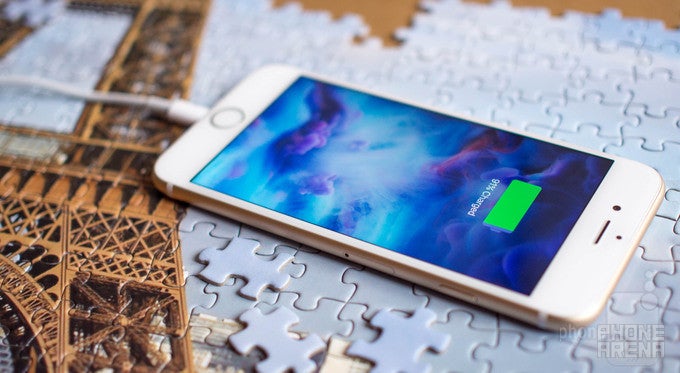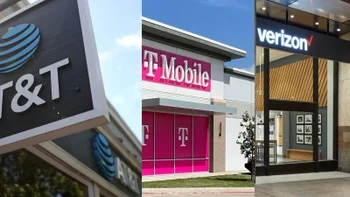Can you really charge an iPhone faster with a more powerful charger? We investigate

Lab coats – on! Let's get testing
For the purpose of our testing, we drained our iPhone 6s' battery until the phone turned itself off. Then we plugged it to one of several chargers. As alternatives to Apple's stock charger, we used an iPad charger, a MacBook Air's USB port, a Samsung power bank, and a very powerful third-party charger by Anker. For the record, we only did a single recharge test per day to avoid straining the iPhone's battery. Here's a breakdown of the figures we got at the end:
| Charger | Maximum rated output (current and power) | Recharge time |
| Stock iPhone 6s charger | 1 amp 5 watts | 150 minutes |
| Anker 40W 5-port desktop USB charger | 2.1 amps 10.5 watts (per port) | 136 minutes |
| Stock iPad Air 2 charger | 2 amps 10 watts | 135 minutes |
| MacBook Air (2013 model) | 1.1 amp 5.5 watts | 147 minutes |
| Samsung 10,000mAh power bank | 2.1 amps 10.5 watts | 155 minutes |
| source: PhoneArena.com | ||
Тhe good news is that using a beefier charger really does make a difference, as our test results show. But the not-so-good good news is that the iPhone 6s charged only 15 minutes faster than usual, and that in the best-case scenario. That's a boost of only 10% – underwhelming given the power output of some of the alternative chargers used.
So what's going on here?
Powerful chargers may charge the iPhone 6s only slightly faster
Common sense suggests that an iPhone 6s would charge twice as fast when plugged to, let's say, an iPad's charger. The tablet's power brick is twice as powerful compared to the iPhone's stock charger, after all. But what's going on behind the curtains is a bit more complicated than this. You see, a smartphone is designed to draw only as much power as it can handle safely. That goes for the iPhone 6s as well. In other words, it doesn't matter if your charger is rated at a million watts when the phone being charged can receive only 5W or so.Then there's the rate at which a smartphone, the iPhone 6s included, draws power from the source. It varies. In general, an empty or near-empty smartphone battery can be safely charged at high power. Once it reaches a certain charge level – around 80%, in Apple's case – the charging rate is slowed down to prolong the battery cell's life.

In conclusion, it is perfectly fine to charge an iPhone 6s from a charger other than the one it came with. This can be an iPad charger, another smartphone's charger, a third-party charger, a laptop or a computer – it doesn't really matter. (Although using no-name counterfeit chargers is definitely not a good idea.) As long as the charger can provide power from a USB port, it should work. Just don't expect to see your iPhone charge dramatically faster, no matter how powerful of a charger you're using.
Related articles you might like:
Follow us on Google News


















Things that are NOT allowed:
To help keep our community safe and free from spam, we apply temporary limits to newly created accounts: